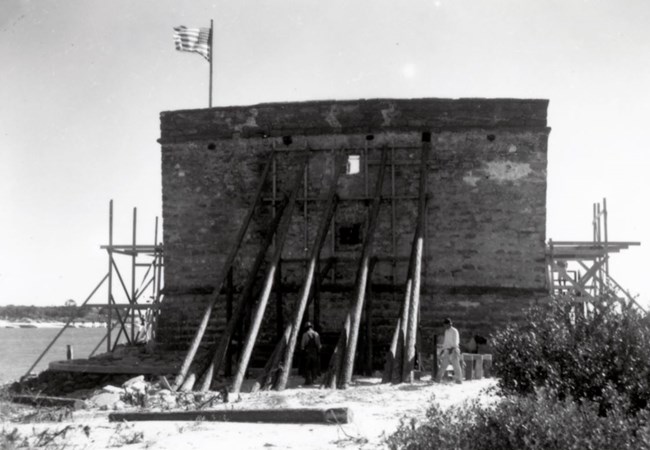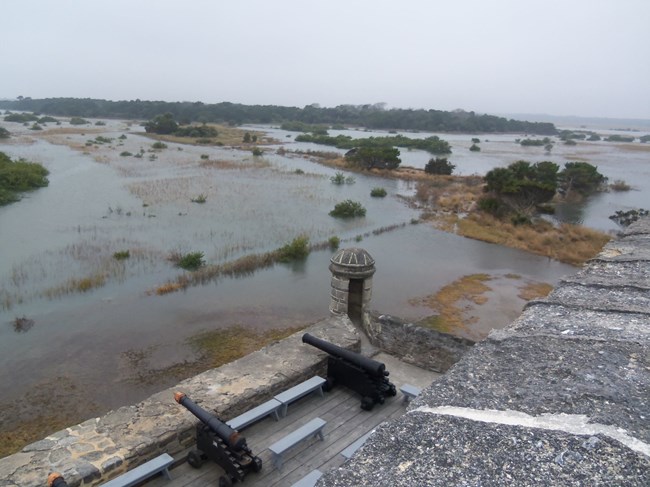
RestorationFort Matanzas National Monument now consists of nearly 300 acres-- the south end of Anastasia Island and most of Rattlesnake Island. Much of the land is preserved as natural habitat, but the National Park Service continues to preserve the historic fort as well. In 1999 the coquina chimney was reconstructed, and Fort Matanzas received two replica, iron 6-pounder cannon used in cannon firing demonstrations. The fort's old seawall from the 1930s was fixed in 2008 and a floating concrete dock replaced the former metal one. New passenger ferries were also purchased in 2011 to accommadate the ever growing visitation. Read More. . . 
Climate ChangeFort Matanzas is located near low-lying coastal areas and shorelines, so rising sea levels and increased storm surge can have big impacts on the park. Increases in erosion, saltwater intrusion, and high-tide flooding causes challenges for both cultural and natural resources. The fort is an important historic site because it represents one of the oldest masonry forts in the US, built during Spanish colonization of Florida, and is built of a unique stone called coquina. Additionally, Fort Matanzas features frequently-visited natural resources such as beaches and dunes and recreational trails through coastal hammock forest and a salt marsh, which could be impacted by sea level rise. Learn more... |
Last updated: April 27, 2022
